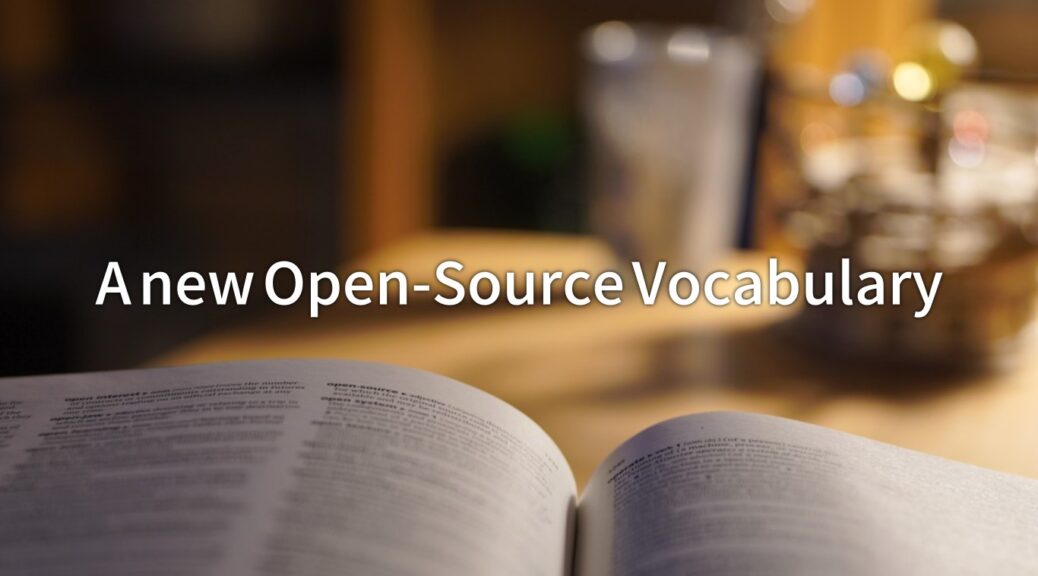With the EU Cyber Resilience Act (CRA) arriving in 2024, software in general is – for the first time – about to be legislated.
This means any business who wishes to place software on the EU market will have to comply to new cybersecurity demands, and by implication this will affect tens of thousands of Open Source authors and maintainers indirectly.
A couple of ramifications are safe to expect.
- Businesses are now required (after a risk assessment) to have a full overview of what their software is and is composed of – including their Open Source transitive dependencies – “all the way down” – in order to ensure they have no vulnerable components in use.
- With well over 80% of software in use depending on Open Source ecosystems, authors, developers and maintainers, FOSS communities should expect to get a level of scrutiny much greater than before, and expect to make available whatever metadata that their downstream users are obliged to have.
- Most businesses will (eventually, hopefully) realize that they depend on components and people that are in need of their support.
With this in mind, I would like to propose the adoption of an updated vocabulary to use in this new reality. This is for helping management of these businesses make informed decisions that are both beneficial for the continued sustainability of their commercial activity, and likewise for the Open Source projects, authors and communities their business depends on.
A New Open Source Vocabulary
Invest on Return (not Return on Invest)
The idea that a business should get a “Return on Investment” (ROI), is completely backwards when it come to Open Source software. Companies depending on Open Source components already have their return by the fact that they are already using these components in their value-chain, and therefore already depending on these projects.
Instead, think of FOSS funding as an investment in the continued well-being of these projects, just as much as it is sensible in investing in the continuation of any profit-bringing venture. The business is already benefiting from the Return, and the next step is to Invest in the reliability of this source of income – Invest on Return (IOR).
Source: Conversation with Chad Whitacre on the SustainOSS podcast episode 213 (starting at 13m58s).
Open Source Sustainability
Open Source Sustainability is about ensuring the continued responsiveness of component project authors, so they both are available and capable to fix bugs and respond to vulnerabilities as the world proceeds. If a project owner is burned out or alone (or worse!), this situation directly impacts the risk landscape of their downstream users, and should therefore be mitigated. A recent example of this can be found in the revelations of social engineering leading to the 2024 xz-utils hack.
To mitigate this, downstream users should make Open Source Sustainability a part of their operating budgets and costs.
Open Source Bystander Effect
The effect seen when everyone is waiting for someone else to make the first move (or accept a burden) to support a resource-starved Open Source project. This is a consequence of businesses having never felt the need to involve themselves (in a budgetary sense) in Open Source communities, with the predictable result that these Open Source projects and communities have become so resource-starved that many just abandon them, and thereby worsening the risk and reliability landscape for everyone. By waiting for someone else to “fix the problem” instead of showing leadership, businesses inadvertently hurt themselves through inaction.
To mitigate this, businesses and users can familiarize themselves with their own dependency tree, and look for indicators of any projects needing support. This may include financial, software development, marketing, project management, documentation or any of a number of issues. Reach out to the project owners, and have a continued discussion on how the business can help — and if repeated attempts fail, then it may be time to consider taking over or even forking the project.
Open Source Colleague
An Open Source author, developer or maintainer that the business depends on. If they have a bad week or month, and the business is in risk of consequences because of this, then the business should consider treating them as any of their regular highly competent colleagues.
If the business decides to support their Open Source Colleague in a sustainable way, they may become an Open Source Supplier. Until then, they are Open Source Volunteers, with the risks and liabilities this entails.
Open Source Supplier
An author, developer, maintainer or contributor working on an Open Source project that is financially supported in a way that is sustainable in the long-term. This is an especially useful term to use when taking into account the requirements for sustained support and updates laid out in the EU Cyber Resilience Act recitals 60-63. In this context, I mean “Supplier” and “Manufacturer” to be equivalent.
Open Source Volunteer
An author, developer, maintainer or contributor that is volunteering for an Open Source project. This work may or may not happen in a way that unsustainable in the long run.
Second-party component
A component depended on or used in a product, that is licensed with an OSI approved Open Source license. Since the company (“first-party”) has accepted the FOSS license, they are now – in a sense – associates in the further development of this component. They both gain the benefits of the license, and are subject to the obligations of it.
While the obligations are “cheap”, they still involve considerations around project health, interaction with volunteers and their long-term sustainability, and using the term “Second-Party” can help remind us to help these projects’ longevity.
Software Sustainability (Budget line item)
A budget line item dedicated to supporting the authors and projects behind components that the business depends on. This is spending money on the continued and sustainable reliability of software components that the business actually uses. This is not sponsorship, not charity and not “giving back to the community”, but rather a prudent act of self-interest, since “freeloading” (using Open Source projects without contributing to their sustainability) may expose the business to much more expensive risks.
Third-party component
A component depended on or used in a product, where the component owner does not gives all four freedoms the Open Source definition affords to the user (Use, Learn, Modify, Share), or where the component is not directly or transitively in use by the business.
Partnership (not Sponsorship)
When considering business-critical Open Source projects or ecosystems, a business would do well to treat this relationship as a partnership. For the project or ecosystem user (the business) this partnership is already beneficial, and since the business has accepted the terms of their Open Source license, they have demonstrated that they depend on the continued reliability of this project or ecosystem. Partners are not expected to be bystanders, but rather take an active role in their partner’s well-being and long-term health.
Consequently, if an Open Source developer or project (or ecosystem contributor) approaches the business for Sponsorship, they are making a mistake! The business is already a partner, and should expect to be treated accordingly.
Final words
The vocabulary proposed here is meant to help business stakeholders and decision-makers to inform themselves enough to prompt a re-evaluation of their relationships with their upstream open source component providers. The first step in this awareness-raising, is to introduce some new useful concepts that can help them see the nuances and realities of the landscape they are operating in. I hope that you, the reader, agree and decide to adopt this vocabulary in your daily dealings.


